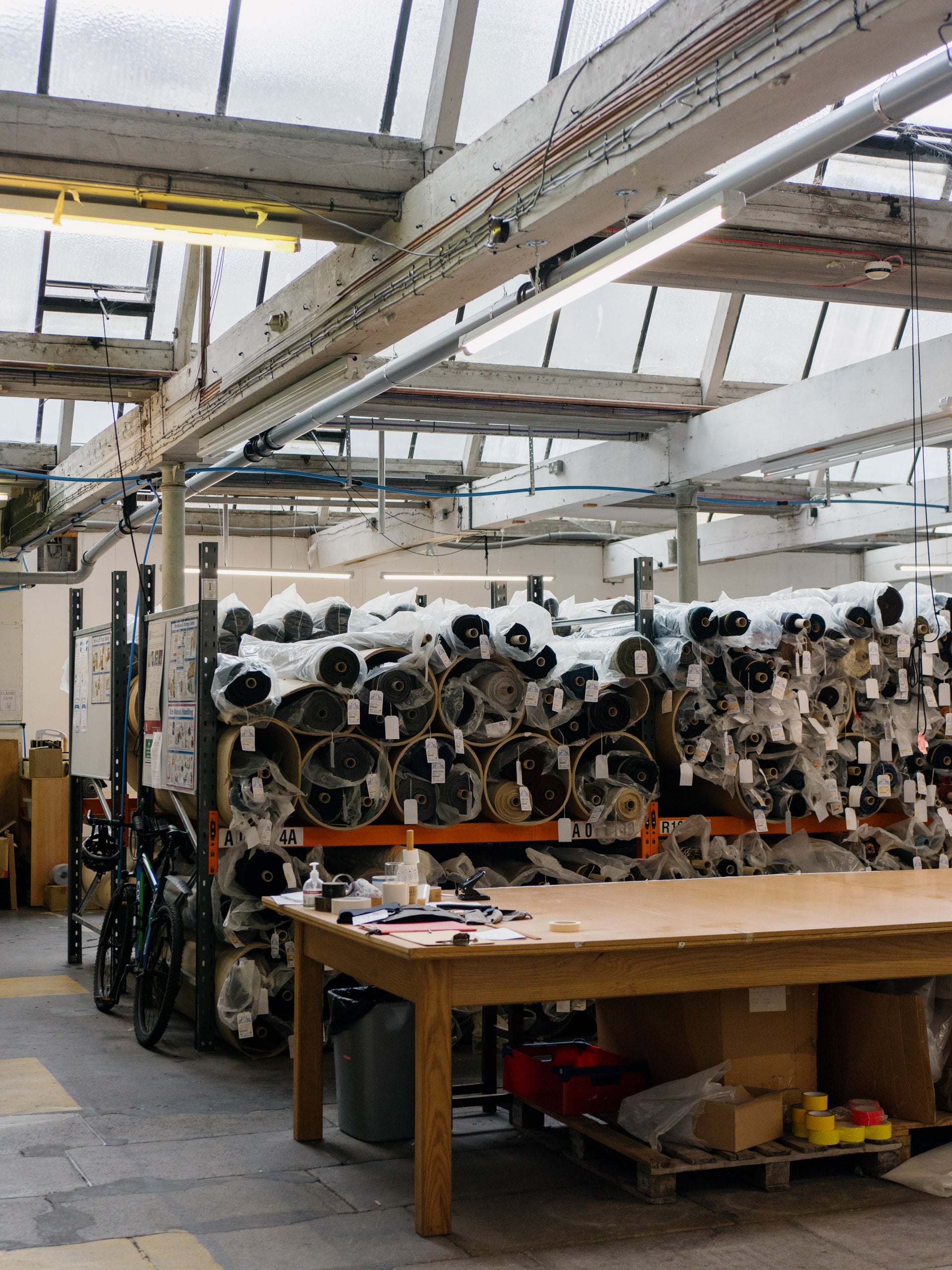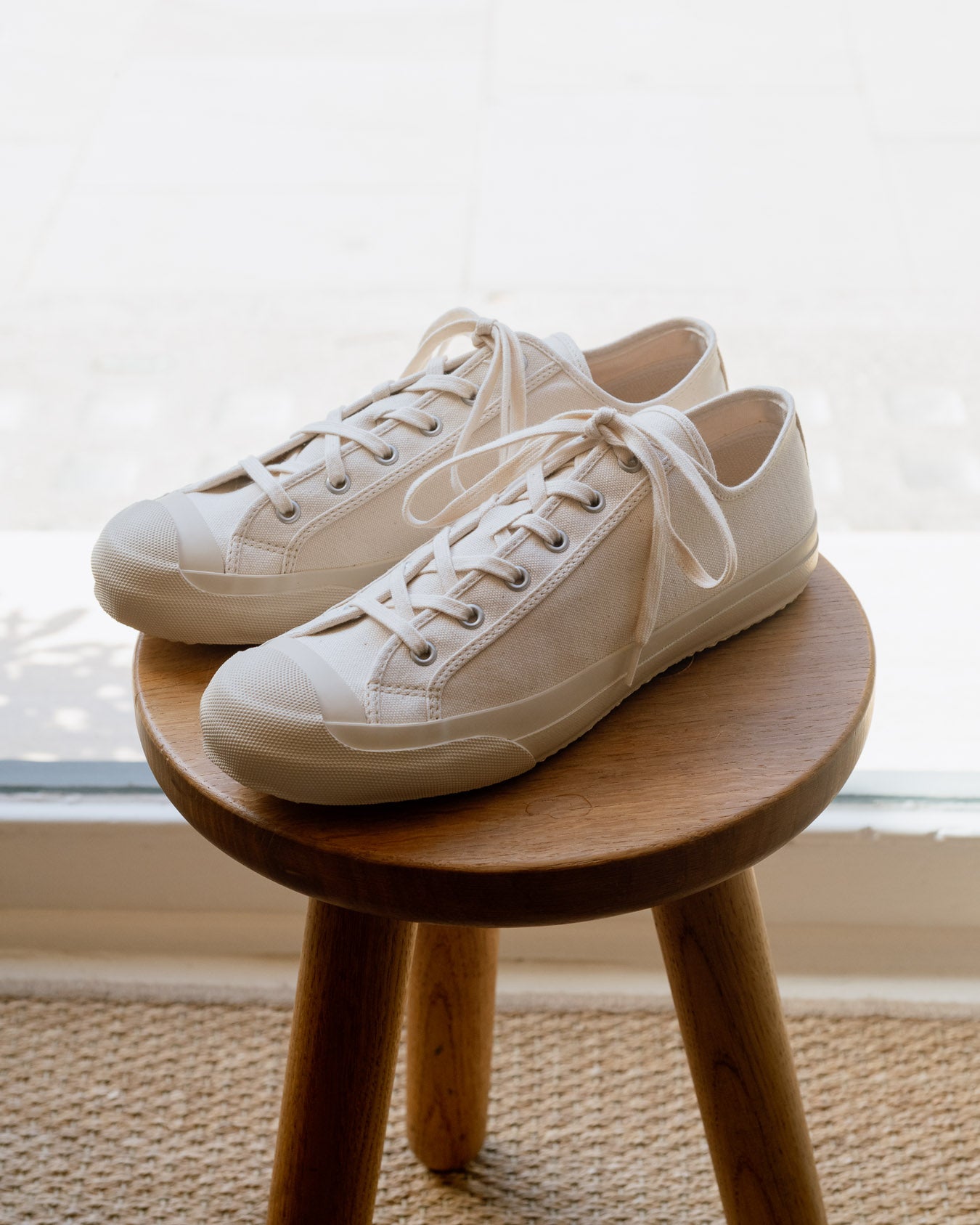There are few fabrics more closely associated with English tailoring than wool flannel. Heavy, rich, and dependable, flannel suits and coats drape beautifully, insulate wearers, and last for decades. While Savile Row remains the beating heart of classic menswear, though, English woollen mills have long been in decline. This only makes the remarkable history of the Fox Brothers mill in the West of England more impressive.


Fox Brothers & Co., as it would become known, began in 1772, when the young Thomas Fox joined his grandfather’s Somerset weaving company. The company was expanding rapidly, and by 1796 it would relocate to a former flour mill in Tonedale, not far from the original premises. With more space and a power supply from the river Tone, the mill could be vertically integrated, spinning raw wool and weaving cloth in one location.
Over the next century, Fox Brothers grew to one of the largest manufacturers of its kind in the country, employing around five thousand people. A catalogue of the Great Exhibition of the Works of Industry of All Nations of 1851 in Hyde Park records Fox Brothers representing England in the manufacture of woollens, worsted cloth and blankets. Contracts with the British Army for khaki serge formed a major part of the business from the 1880s into the First World War. From its beginnings as a water-powered operation, the factory would switch to steam power, then gas, and ultimately electricity.


Fox Brothers continued to modernise over the twentieth century, closing on-site dye works and bringing in new machinery into the 1950s. Like others, however, the business contracted during the wider post-war decline of the British woollen industry, and by the 1990s production on the large Tonedale site had dwindled. In 2009, with Fox at risk of bankruptcy, a rescue emerged in the form of menswear designer and aficionado Douglas Cordeaux, who took over as managing director after purchasing the company together with business partner Deborah Meaden. The pair revitalised the Fox Brothers brand and brought English flannel to customers beyond the highly specialised world of bespoke tailoring. English heritage brands such as Aquascutum and Hackett became buyers, as did continental luxury houses including Louis Vuitton.
It’s made from superfine Australian merino these days, but Fox flannel is still produced in much the same way: woollen yarns are selected and woven on the loom, producing an unfinished, ‘greasy’ cloth. This is then cleaned to remove the lanolin, and a long finished process begins in which the cloth is milled, massaged, and pressed over hours to create a brushed finish and a fluid, free-flowing drape.


Fox’s signature West of England flannel is a byword for richness, density and luxury. It’s a hearty 400g brushed wool cloth (though Fox’s coat clothes weigh more than double that). Italian cloths, prominent in luxury menswear, might be soft as a cloud, but advocates of English flannel will tell you that it lasts longer and wears in beautifully over time, creating a garment that’s luxurious and yet substantial.
This season, Trunk’s celebrated Blandford field jacket is transformed from a versatile spring/summer outer layer into a luxurious winter utility player. It’s made up in classic Fox flannel, finished with an innovative eco coating that repels both water and stains: a distinctly modern use for a historic cloth. This practical finishing, combined with the formal polish and serious comfort of the classic English flannel, make it the perfect go-anywhere, do-anything jacket for the cooler months.
Shop the Trunk Blandford Fox Brothers Wool Field Jacket here.







